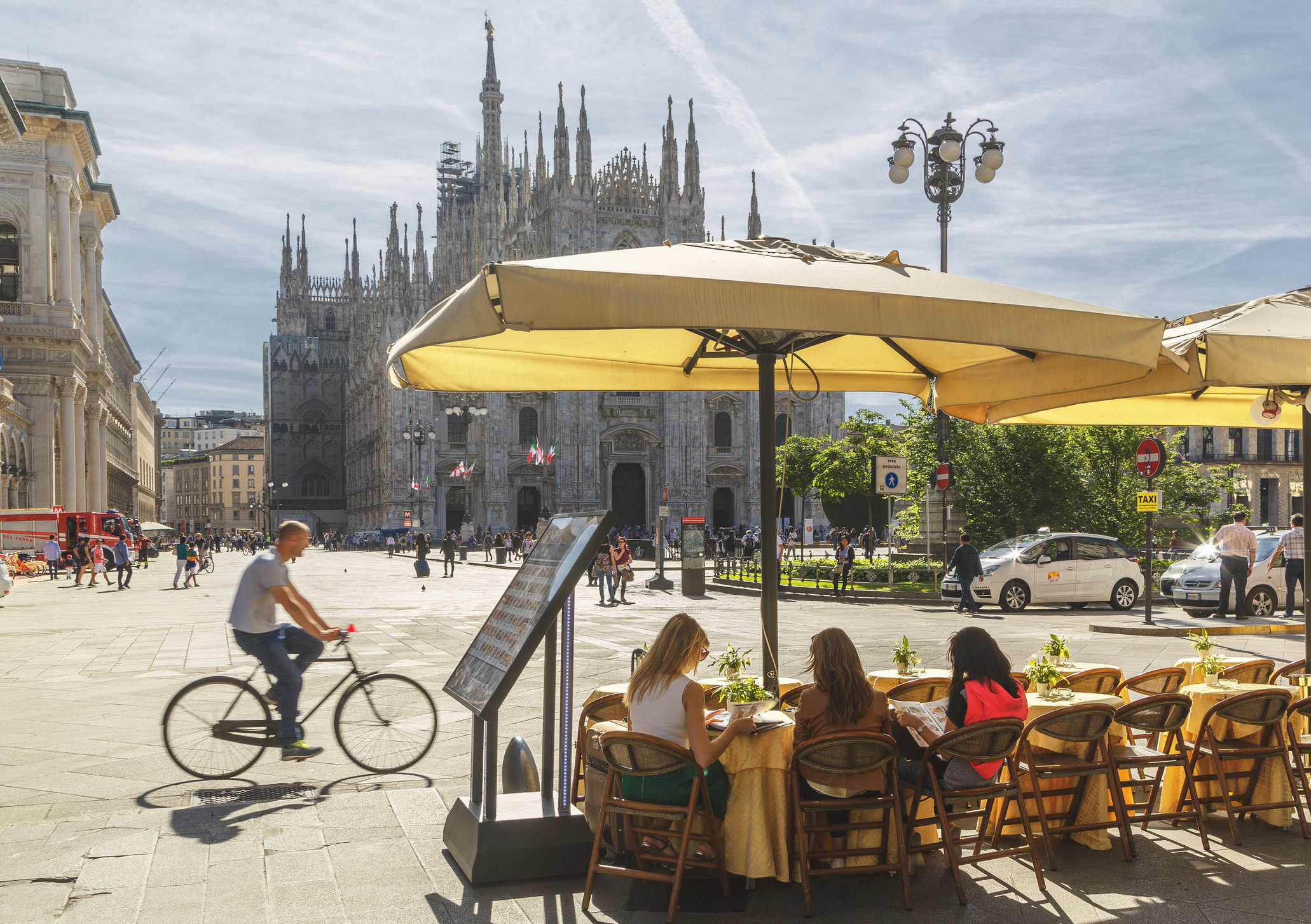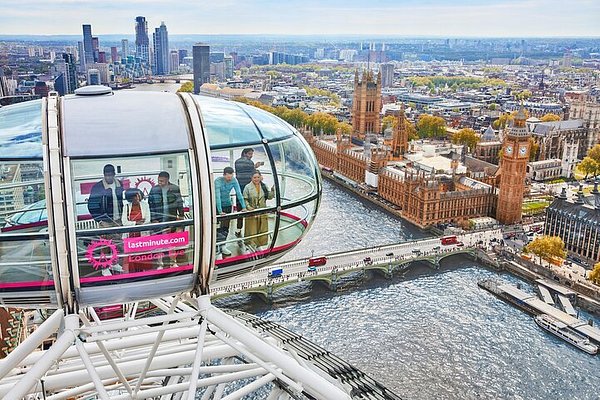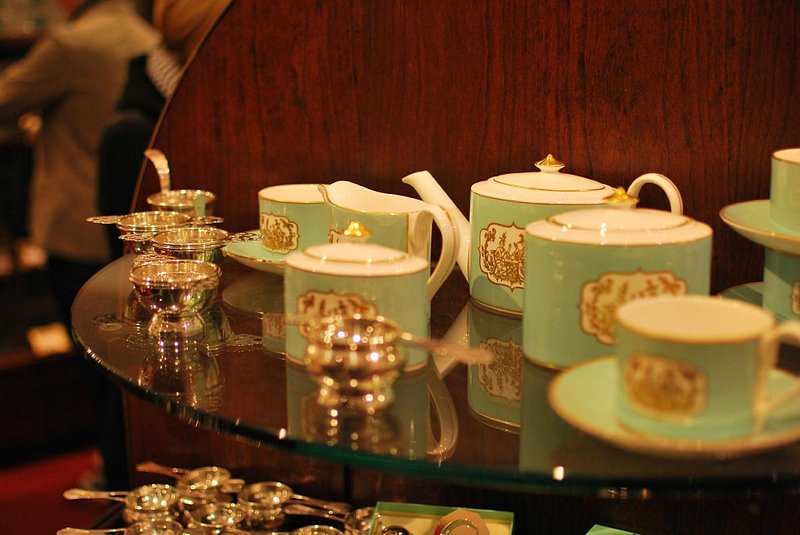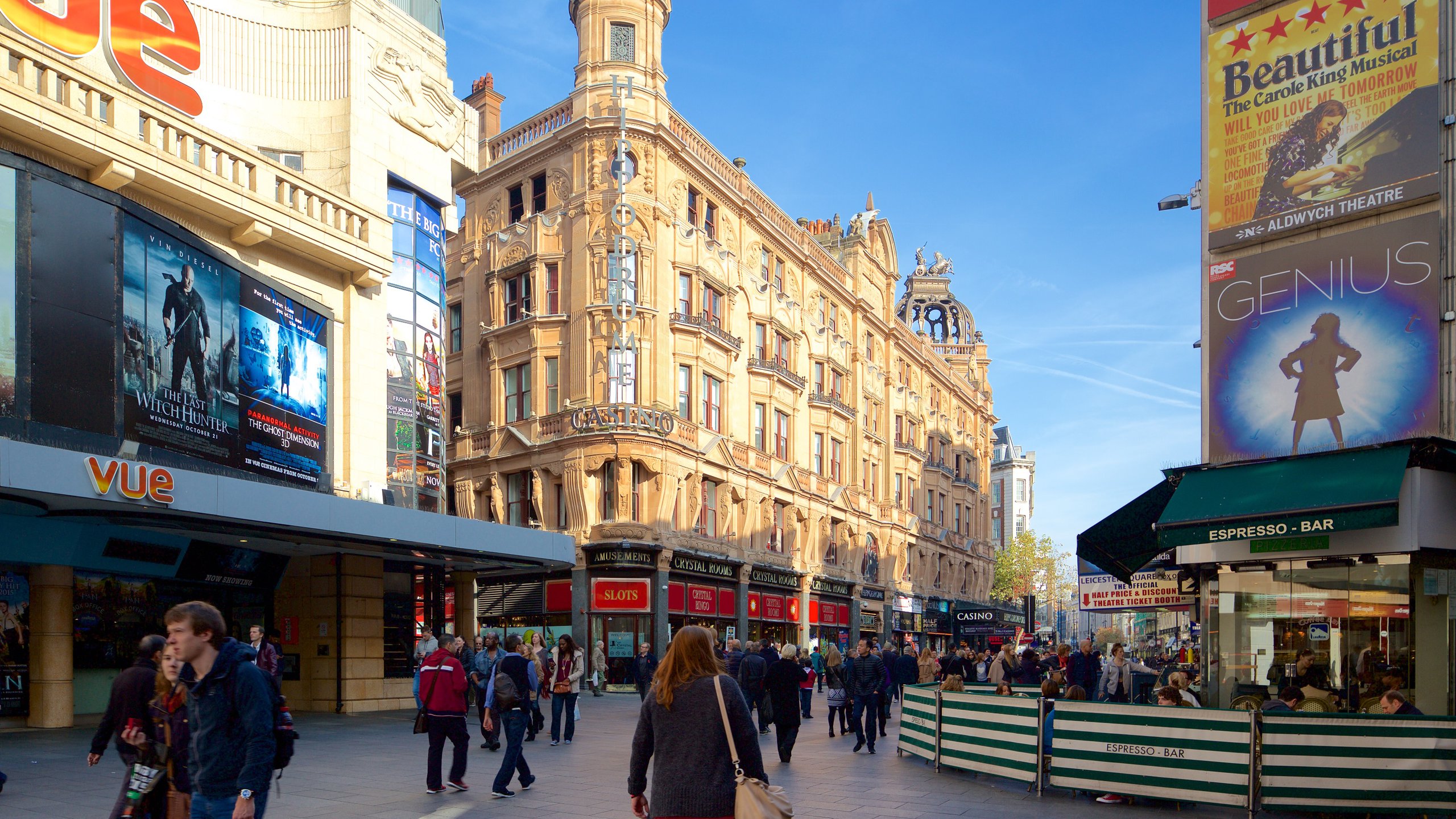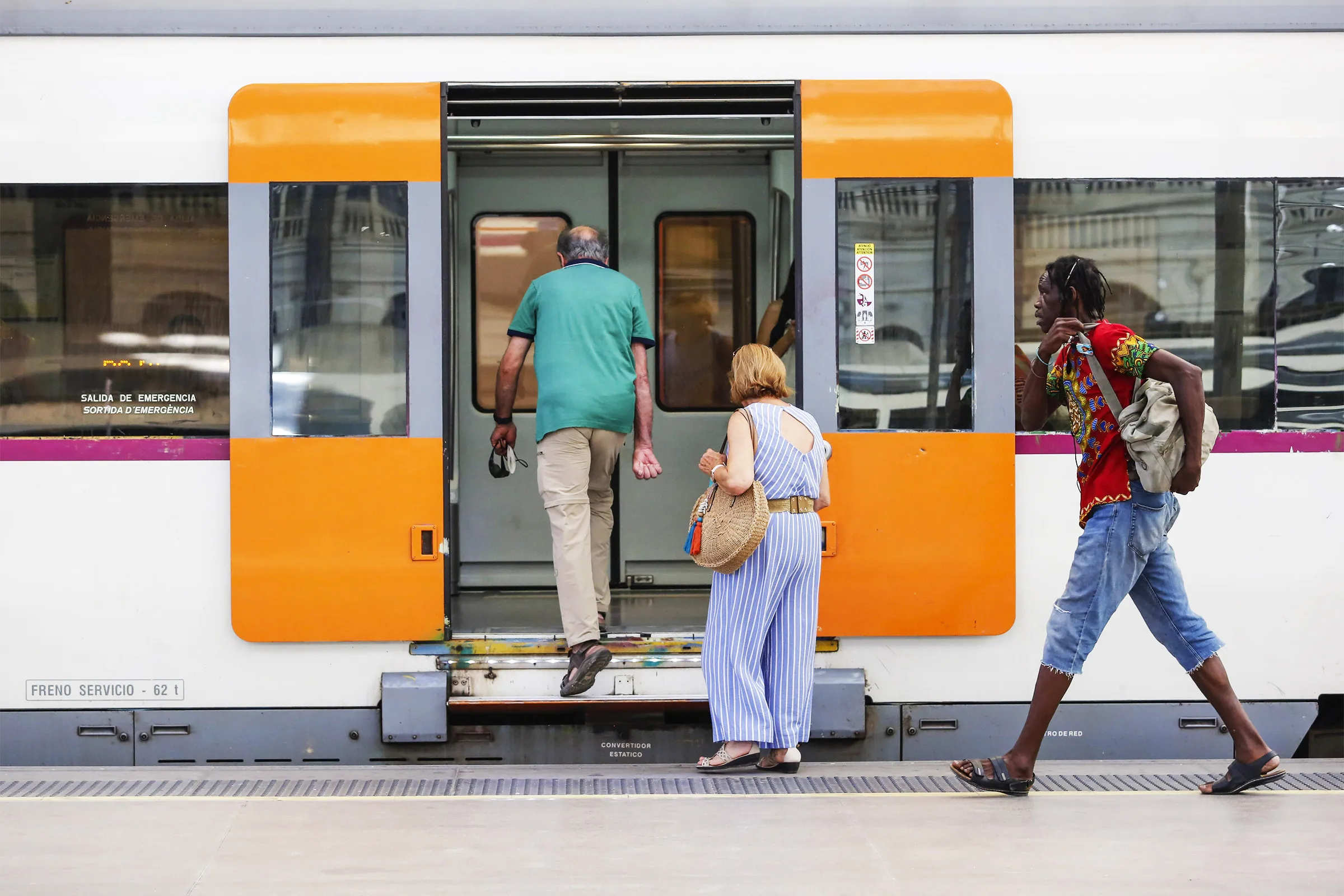How To Avoid Tourist Traps In London Like A Local
Want to explore London like a local? Discover 20 smart ways to avoid tourist traps, save money, and experience authentic London.
Mar 01, 202518.2K Shares272.9K Views

London is a city full of history, culture, and incredible sights, but for every stunning landmark, there are overpriced restaurants, crowded attractions, and gimmicky experiences designed to lure in unsuspecting tourists. Many visitors end up spending more than necessary or missing out on the city's authentic charm due to these common traps.
Knowing how to navigate London wisely can help save money, avoid frustration, and ensure a more enjoyable experience. This guide breaks down the biggest tourist traps and provides practical tips to help travelers experience the city like a local.
What Are Tourist Traps And Why Do They Exist?
A tourist trap is any location, business, or experience that takes advantage of travelers by overcharging for services, offering poor-quality products, or creating artificial hype around something that isn’t worth the price. They exist in major tourist cities like London because:
- Visitors often lack local knowledge and rely on guidebooks or online recommendations that are outdated or commercialized.
- Popular locations attract businesses that prioritize profits over authenticity.
- Many travelers are willing to pay extra for convenience or familiarity, such as dining near major attractions.
- Clever marketing and aggressive sales tactics create a false sense of exclusivity or urgency.
By recognizing the common features of tourist traps, it's easier to avoid them and find better alternatives. Read on to get informative ways to avoid tourist traps in London.
1. Avoid Eating Near Major Attractions
Restaurants close to famous landmarks like Buckingham Palace, the Tower of London, and Westminster Abbey often charge high prices for subpar food. These establishments rely on foot traffic rather than repeat customers, which means quality and service can be poor.
Instead of dining in these overpriced restaurants, walk ten to fifteen minutes away from the main attractions, where you can find better and more affordable options. Food markets such as Borough Market, Camden Market, and Maltby Street Market offer excellent meals at reasonable prices. Checking reviews on Google, OpenTable, or local food blogs can also help in finding authentic places to eat.
2. Don’t Overpay For The London Eye
The London Eyeprovides great views, but it is expensive and often overcrowded. A standard ticket costs around £30, and long queues make it a time-consuming experience. Instead of spending money on this attraction, consider visiting the Sky Garden, which offers a similar panoramic view of London for free if booked in advance.
Other great alternatives include Primrose Hill, which provides a beautiful skyline view at no cost, and the One New Change rooftop near St. Paul’s Cathedral, another excellent free option.
3. Beware Of Fake “Discount” Tickets
Scammers operate around major attractions, selling fake or overpriced tickets. These fraudulent sellers often claim to offer last-minute deals or discounted entry, but the tickets are either invalid or non-existent.
To avoid this, always purchase tickets directly from the official attraction website or trusted platforms such as Tiqets, GetYourGuide, or the London Pass. For West End shows, TodayTix or the TKTS booth in Leicester Square provide legitimate discounts.
4. Avoid Black Cabs
London’s black cabs are an iconic part of the city, but they are also expensive. A short trip can easily cost over £20, while public transport offers a much cheaper alternative. The London Underground, buses, and Overground trains are far more budget-friendly.
Using an Oyster card or a contactless payment card significantly reduces transport costs. Apps like Citymapper help find the fastest and most affordable routes. For an eco-friendly and budget-conscious option, renting a Santander Cycle is an inexpensive way to get around. Getting around London by nightis also more affordable when using night buses or the Underground, which operate late into the evening, providing a safe and efficient way to experience the city after dark.
5. Skip Tourist-Filled Pubs
Pubs in high-traffic areas such as Covent Garden, Leicester Square, and Oxford Street are often overpriced and lack an authentic atmosphere. They primarily cater to tourists and charge higher prices for drinks and food.
Instead, visiting a traditional London pub like The Harp in Covent Garden or The Churchill Arms in Notting Hillprovides a more genuine experience. Samuel Smith’s pubs also tend to be more affordable and attract a local crowd.
6. Don’t Buy Souvenirs From Tourist Shops
Souvenir shops around Oxford Street, Leicester Square, and Westminster sell overpriced, mass-produced items. These products are often low quality and lack authenticity.
For unique and meaningful souvenirs, exploring Camden Market, Spitalfields Market, or Portobello Road Market is a better option. Museum gift shops also offer well-crafted souvenirs, while charity shops sometimes have vintage London-themed items at much lower prices.
7. Avoid High Fees At ATMs
Standalone ATMs in tourist-heavy areas charge high withdrawal fees, often between £2 and £5 per transaction. To avoid these unnecessary charges, using bank-affiliated ATMs from Barclays, HSBC, or Lloyds is a better choice.
Withdrawing cash at the airport or from major stations like King’s Cross also helps prevent excessive fees. Whenever possible, using a card instead of cash reduces the need for frequent ATM withdrawals.
8. Beware Of Street Scams
Tourist hotspots such as Leicester Square and Oxford Street attract scammers who use various tricks to take advantage of visitors. The Three-Card Trick is a common scam in which a street performer appears to play a simple betting game, but the result is always rigged.
Fake charity collectors ask for donations that never go to a legitimate cause. The Friendship Bracelet Scam involves a scammer tying a bracelet onto someone’s wrist and then demanding payment. Staying alert and politely ignoring strangers who approach on the street helps avoid these scams. For a safer and more enjoyable experience, consider visiting different London neighborhoods, where you can find hidden gems, local markets, and authentic dining spots away from the typical tourist traps.
9. Skip Overpriced Hop-On Hop-Off Buses
Tourist bus services advertise convenience, but they are expensive and slow due to heavy traffic. A ticket can cost around £30 to £40 per person, which is not worth the money.
Instead, taking a regular London bus such as Route 11, 15, or 24 provides the same sightseeing experience for a fraction of the price. These routes pass by major landmarks, offering a budget-friendly alternative.
10. Don’t Fall For “Free Entry” Attractions With Hidden Costs
Some attractions claim to offer free entry but charge high fees for exhibits, guided tours, or special access areas. Before visiting, checking whether any extra fees apply helps avoid unexpected costs.
Genuine free attractions include the British Museum, the National Gallery, and the Natural History Museum, all of which provide incredible experiences without hidden charges.
11. Avoid Overpriced Coffee Chains
Tourist areas are full of chain coffee shops such as Starbucks and Costa, which charge premium prices. Independent cafés offer better quality coffee at more reasonable prices.
Monmouth Coffee in Covent Garden and Workshop Coffee in Fitzrovia are excellent alternatives. Some museum cafés also serve great coffee at a lower price while providing a relaxed atmosphere.
12. Avoid Leicester Square’s Tourist-Targeted Theaters
Leicester Square is known for its cinemas and theaters, but many of the shows in this area are designed for tourists and come with inflated ticket prices. Seeing a performance at Shakespeare’s Globe provides a more authentic and historical experience. For discounted West End tickets, TodayTix is a great option.
13. Don’t Pay For A Thames River Cruise
Tourist river cruises on the Thames can cost upwards of £20 per person. Instead of paying for an expensive boat tour, the Thames Clippers (Uber Boat) provide a much cheaper alternative. These boats travel along the same scenic route but cost only £4 to £7. The experience is nearly identical but at a much lower price.
You Might Like: Top 30 Places To Visit In London This Year
14. Avoid The Changing Of The Guard Crowds
The Changing of the Guard at Buckingham Palace is a famous event, but it draws massive crowds, making it difficult to see anything. Arriving at least an hour early is necessary to get a good spot, but even then, the experience can be overwhelming.
Watching the Horse Guards Parade at Whitehall is a better alternative, as it offers a similar experience without the large crowds.
15. Travel Off-Peak To Save Money And Time
London is busiest between June and August, when hotel prices and attraction costs are at their highest. Visiting in January, February, October, or November allows for a more relaxed experience with fewer crowds. Traveling mid-week instead of on weekends also makes it easier to enjoy attractions without long queues.
16. Don’t Engage With The “Magicians” On Westminster Bridge
Westminster Bridge, one of London’s most iconic spots, is often crowded with street performers, including so-called magicians and illusionists. While they may appear entertaining, many of these performers are part of scams designed to trick tourists into losing money. The classic "Three-Card Trick" is a well-known scam in which participants bet on finding a specific card, only to lose every time due to hidden tricks and planted accomplices.
Some magicians also use distractions to create opportunities for pickpockets. While an unsuspecting crowd watches a performance, thieves operate nearby, targeting wallets, phones, and bags. To stay safe, it's best to enjoy the view of the Houses of Parliament, Westminster Abbey, and Big Ben without engaging with these street performances.
17. Don’t Buy Daily Passes For Public Transportation
Many tourists assume that a daily travel pass is the best option for getting around London, but in most cases, it ends up costing more than necessary. Transport for London (TfL) operates a daily fare cap for contactless payments and Oyster cards, meaning you’ll never be charged more than a set amount, no matter how many journeys you take.
For instance, a daily travel pass for Zones 1-2 costs around £15, while the contactless daily cap is significantly lower typically around £8.10. Instead of buying a paper ticket, using a contactless credit or debit card or topping up an Oyster card is the best way to save money.
18. Don’t Overpay For Airport Transfers
Arriving in London can be overwhelming, and many first-time visitors end up paying excessively for airport transfers. Heathrow, Gatwick, and Stansted airports have taxis and private hire services waiting outside, but these often charge inflated fares. A black cab ride from Heathrow to central London can cost over £80, while pre-booked private transfers often range between £50-£100.
A much cheaper option is to use public transport. The Heathrow Express takes just 15 minutes to reach central London, while the Elizabeth Line is even more affordable and connects Heathrow to multiple central locations. From Gatwick, the Thameslink or Gatwick Express trains provide direct access to the city.
19. London Dungeon And Amusement Exhibition
The London Dungeon is marketed as a thrilling attraction that brings London’s dark history to life with live actors, special effects, and interactive sets. While it offers an entertaining experience, many visitors leave feeling that it’s more of a theatrical amusement park than an authentic historical attraction.
The ticket prices are steep, often exceeding £30 per person, and despite this cost, guests frequently report long wait times, overcrowded rooms, and a rushed experience. The focus is more on dramatic storytelling and jump scares rather than genuine historical education.
20. London Bridge Family Tourist Trap
Many visitors confuse "London Bridge" with "Tower Bridge," expecting to see a grand and historic landmark. In reality, London Bridge is a modern, unremarkable structure with little historical significance. Despite this, several tourist attractions near the bridge attempt to capitalize on its fame by charging high prices for underwhelming experiences.
Some of the so-called "family-friendly" attractions near London Bridge, including overpriced river cruises and mediocre themed exhibitions, rely on tourist confusion to sell expensive tickets. Visitors looking for history and impressive architecture should head to Tower Bridgeinstead, where you can walk across the glass-floored upper level and visit the engine rooms.
FAQs
How Can I Find Local-approved Restaurants?
Check Google reviews, follow food bloggers based in London, and ask locals for recommendations instead of relying on TripAdvisor rankings.
Are Tourist Passes Worth It?
Passes like the London Pass are useful if you plan to visit multiple attractions in a short time. Otherwise, it’s often cheaper to book individual tickets.
How Do I Spot A Tourist Scam?
Be cautious of strangers approaching you for donations, asking you to sign petitions, or offering “free” gifts. If it seems too good to be true, it usually is.
How Do I Spot A Tourist Trap Restaurant?
Look for restaurants with pushy staff outside, menus only in English, and inflated prices. Check online reviews and look for places with local clientele.
Final Thoughts
London is an incredible city with plenty to offer, but tourist traps can make the experience frustrating and expensive. By planning ahead, checking local recommendations, and avoiding common pitfalls, visitors can enjoy an authentic and budget-friendly trip. Making smart choices about food, attractions, and transport ensures a richer experience without falling into common tourist traps.
Jump to
What Are Tourist Traps And Why Do They Exist?
1. Avoid Eating Near Major Attractions
2. Don’t Overpay For The London Eye
3. Beware Of Fake “Discount” Tickets
4. Avoid Black Cabs
5. Skip Tourist-Filled Pubs
6. Don’t Buy Souvenirs From Tourist Shops
7. Avoid High Fees At ATMs
8. Beware Of Street Scams
9. Skip Overpriced Hop-On Hop-Off Buses
10. Don’t Fall For “Free Entry” Attractions With Hidden Costs
11. Avoid Overpriced Coffee Chains
12. Avoid Leicester Square’s Tourist-Targeted Theaters
13. Don’t Pay For A Thames River Cruise
14. Avoid The Changing Of The Guard Crowds
15. Travel Off-Peak To Save Money And Time
16. Don’t Engage With The “Magicians” On Westminster Bridge
17. Don’t Buy Daily Passes For Public Transportation
18. Don’t Overpay For Airport Transfers
19. London Dungeon And Amusement Exhibition
20. London Bridge Family Tourist Trap
FAQs
Final Thoughts
Latest Articles
Popular Articles
